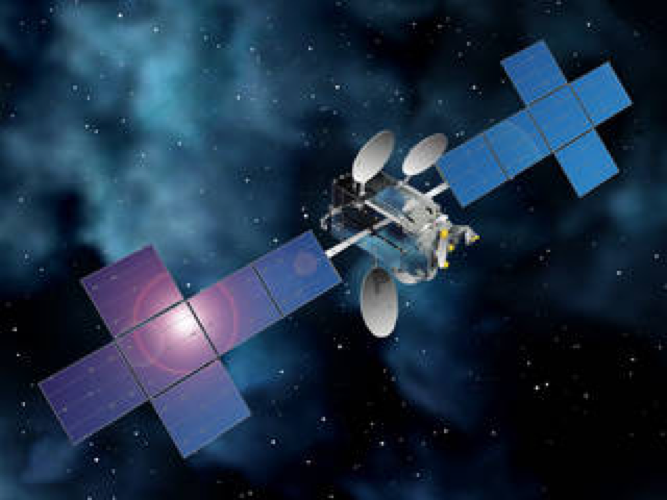
“Science and technology multiply around us. To an increasing extent, they dictate the languages in which we speak and think. Either we use those languages, or we remain mute.”
- Radio-based space communications have been the convention since the days of NASA’s Mercury and Gemini programs, but even with dramatic improvements to the technology in the last half-century, radio communications are challenged by modern mission needs, which call for significantly higher data rates, or current levels of performance requiring a lot less mass and power — critical resources on any spacecraft.
- Now the Laser Communications Relay Demonstration mission, or LCRD, proposes to revolutionize the way we send and receive data, video and other information, using lasers to encode and transmit data at rates 10 to 100 times faster than today’s fastest RF radios, using significantly less mass and power. The wavelength of the laser light is orders of magnitude shorter than radio waves, meaning the energy is not spread out as much as it travels through space.
- For example, a typical Ka-Band signal from Mars spreads out so much that the diameter of the energy when it reaches Earth is larger than Earth’s diameter. A typical optical signal, however, will only spread over the equivalent of a small portion of the United States; thus there is less energy wasted. The shorter wavelength also means there is significantly more bandwidth available for an optical signal, while radio systems have to increasingly fight for a very limited bandwidth.
- Such a leap in technology could deliver video and high-resolution measurements from spacecraft over planets across the solar system — permitting researchers to make detailed studies of conditions on other worlds the way we now track hurricanes and other climate and environmental changes here on Earth. The Laser Communications Relay Demonstration leverages significant work done by MIT Lincoln Laboratory in Lexington, Massachusetts, for NASA’s Lunar Laser Communications Demonstration, which in turn built upon the pioneering work done for NASA’s Mars Laser Communications Demonstration.
- The LCRD team is led by NASA’s Goddard Space Flight Center in Greenbelt, Maryland. Partners include NASA’s Jet Propulsion Laboratory in Pasadena, California, and MIT Lincoln Laboratory.
- The team is working to fly and validate a reliable, capable and cost-effective optical communications technology directly applicable to the next generation of NASA’s space communications network, serving both near-Earth and deep-space mission requirements.
- The payload will be flown to orbit on a commercial satellite. Mission operators at ground stations in California and Hawaii will test its invisible, near-infrared lasers, beaming data to and from the satellite as they refine the transmission process, study different encoding techniques and perfect tracking systems. They also will study the effects of clouds and other disruptions on communications, studying mitigating solutions including relay operations in orbit or backup receiving stations on the ground.
- The investigation will conduct ground technology validation testing in 2017. It will fly as a commercial satellite payload in 2019.
- The LCRD project is sponsored by NASA’s Space Technology Mission Directorate and NASA’s Space Communications and Navigations network. The project is managed by Goddard Space Flight Center.
Laser Communications Relay Demonstration (LCRD) Overview was originally published in Exponential Technologies / Industrial Revolutions Based Infrastructure on Medium, where people are continuing the conversation by highlighting and responding to this story.
